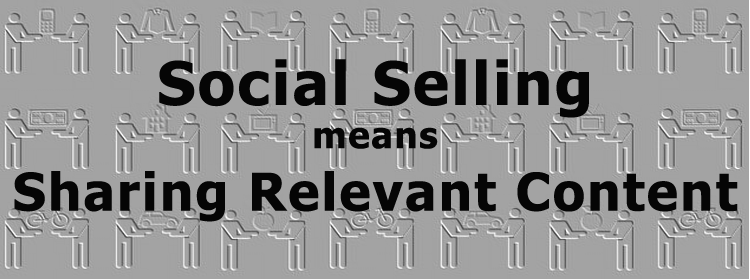
Social selling is not a new phenomenon as many might think.
Social Selling has been around for many years in various forms and is the process of developing one-on-one relationships as part of the sales process. Today, this often takes place via digital social networks such as LinkedIn, Twitter, Facebook, and Instagram; however, it can take place both online and offline.
Social Selling is most widely used in B2B selling, especially in complex sales, but it is also used in more complex B2C sales environments, e.g. financial advisory services, automotive, real estate.
Social Selling is sometimes confused with social marketing but they are not the same. Social Selling is in the domain and responsibility of the salesperson who is focusing on cultivating one-to-one relationships. Social marketing is about broadcasting to the one-to-many relationships. This orientation aligns with our previous articles on the differences between Sales and Marketing.
Therefore Social Selling focuses on how salespeople can use the various resources available to them to effectively engage with their prospective buyers one-on-one in meaningful ways.
The obvious is the digital world where LinkedIn especially has been heavily promoting the benefits of Social Selling. However, we shouldn’t just think digital, we can also think networking and conference events –where you engage specific people–, or the targeted direct (e-)mailing of specific marketing materials to individuals about particular topics, or specific invitations to prospective buyers to hear speakers or visit ‘test’ sites; this is all social selling.
At the heart of it, Social Selling is about sharing relevant content with prospective buyers to enhance their experience and have them want to engage with us; it’s about meaningfully interacting with them directly at events or online; it’s also about social listening where we hear what our prospective buyers are saying in online groups, at events and so one so we can better understand and engage with them.
 Beware the traps of Social Selling
Beware the traps of Social Selling
Social Selling should NOT be confused with the acts of prospecting and selling i.e. making direct contact with buyers to ignite opportunities and then undertake transactional or solution selling where we engage directly with prospective buyers to close deals. These activities are still vital to the overall sales process with Social Selling used to pave the way for buyers to think about making a buying decision with us.
We need to be careful how we use Social Selling, especially if we fall into the trap of bombarding our prospective and existing clients with too much information, even if that information is right for them. We are at risk of ‘spamming’ them which only leads to irritation and potentially being shut out of future opportunities.
Social Selling activities can also take up a lot of valuable time; time that could be used to prospect for new business and get in front of buyers to sell.
Supporters of Social Selling advocate for its inclusion, with some saying social sellers outperform other sales professionals across a range of key performance indicators (KPIs).
‘The most common criticism is that ‘social selling’ is an overhyped buzzword rather than a true sales methodology. Detractors argue that in-person meetings are still more effective than social networking for cultivating relationships, and that social networking should complement, not replace, traditional sales activity.”[1]
Like anything we need to be careful of overhyped buzzwords that promise Nirvana. Done well, social selling will help build our professional brand as salespeople and make us more relevant and valuable to our clients; however, we still need the discipline and balance of the right sales activities and, in the case of Social Selling, good content to share with our prospective buyers but not at the expense of our other vital sales activities.
Remember everybody lives by selling something.
Author: Sue Barrett, www.barrett.com.au
[1] https://en.wikipedia.org/wiki/Social_selling


New Article Email Notification